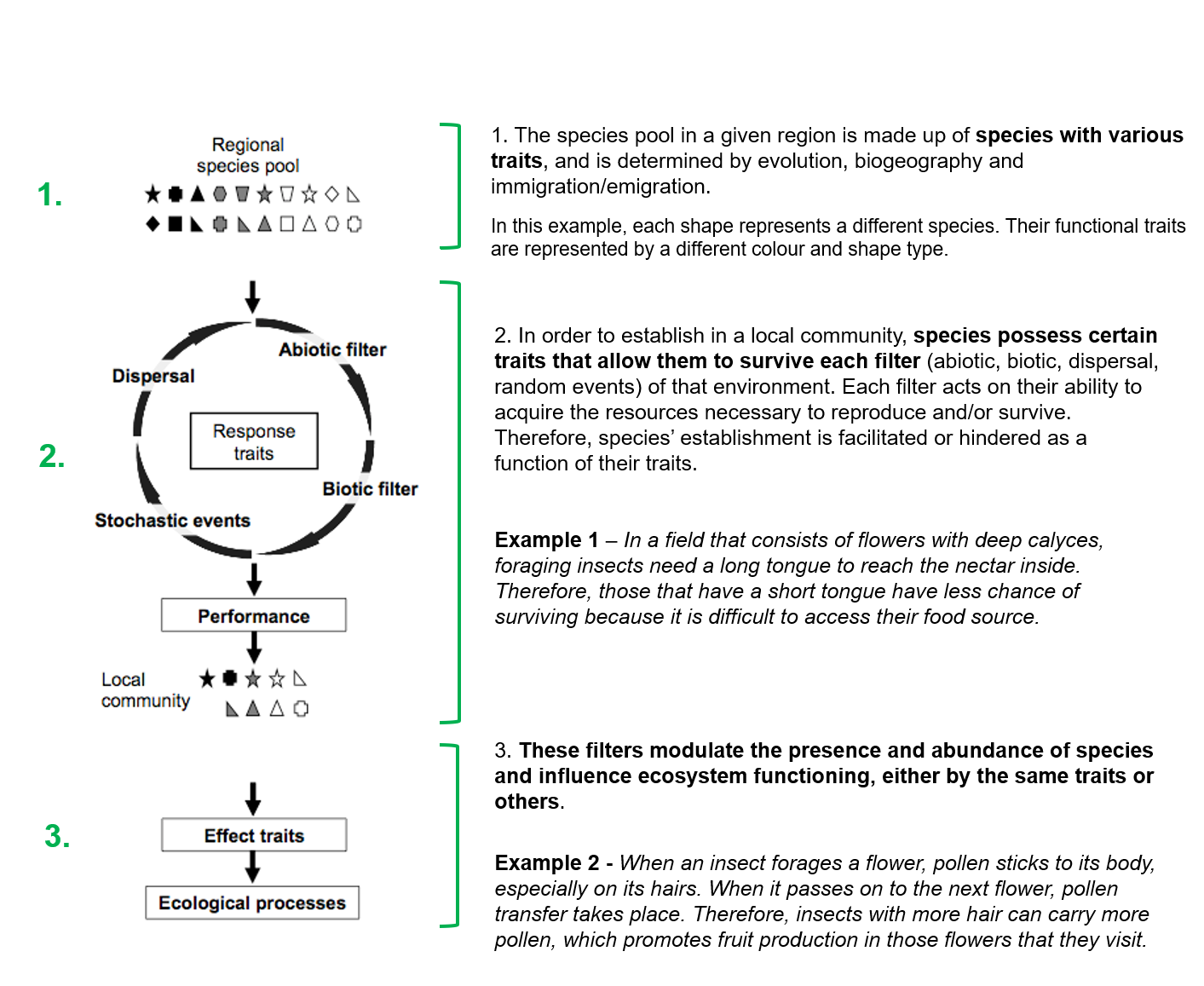What is a trait?
[…] any morphological, physiological, phenological or behavioral feature measurable at the individual level, from the cell to the whole-organism level, without reference to the environment or any other level of organization (Pey et al. 2014, Violle et al. 2007).
Traits can affect the ability of species to survive and reproduce as a function of the characteristics of a given environment. Traits can also influence ecosystem function, hence why they are called “functional traits”.

Photos provided by Pierre-Marc Brousseau, Laura Boisvert-Marsh, Isabelle Aubin, John Ruter - University of Georgia (via Bugwood.org), D. Walters and C. Southwick - USDA (via Bugwood.org)
Importance of studying functional traits
The functional trait approach helps us better understand why certain species occupy a given environment and how they influence ecosystem functioning. It should be emphasized that traits can be studied at the individual scale (plasticity or autecology), population scale (intraspecific variation), and/or community scale (interspecific variation). To properly address research questions, it is important to determine the relevant scale at which to conduct trait measurements, as well as its related filters and functions (Shipley et al. 2016, Brousseau et al. 2018).
Influence of traits on community structuring and ecosystem function
The figure below illustrates the role of traits in a community, either via the filters and/or the functions that are associated with it.

Figure adapted from Brousseau et al. 2018, J. Animal Ecol.
Other references
Aubin, I., Munson, A. D., Cardou, F., Burton, P. J., Isabel, N., Pedlar, J. H., … & Messier, C. (2016). Traits to stay, traits to move: a review of functional traits to assess sensitivity and adaptive capacity of temperate and boreal trees to climate change. Environmental Reviews, 24, 164–186.
Brousseau, P.‐M., Gravel, G., and Handa, I.H. (2018). On the development of a predictive functional trait approach for studying terrestrial arthropods. Journal of Animal Ecology, 87, 1209–1220.
Pey, B., Nahmani, J., Auclerc, A., Capowiez, Y., Cluzeau, D., Cortet, J., … Hedde, M. (2014). Current use of and future needs for soil invertebrate functional traits in community ecology. Basic and Applied Ecology, 15, 194–206.
Shipley, B., De Bello, F., Cornelissen, J. H. C., Laliberté, E., Laughlin, D. C., & Reich, P. B. (2016). Reinforcing loose foundation stones in trait-based plant ecology. Oecologia, 180, 923–931.
Violle, C.; Navas, M.-L.; Vile, D.; Kazakou, E.; Fortunel, C.; Hummel, I.; Garnier, E. 2007. Let the concept of trait be functional! Oikos 116: 882–892.